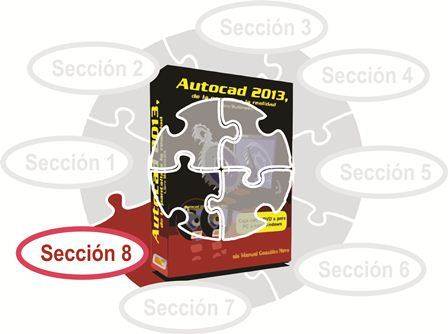3D Drawing with AutoCAD - Section 8

39.2 Mesh primitives
The mesh primitives are identical to the solid primitives we saw in 37.2, except for the differences we have already mentioned between these two types of 3D objects. That is, the mesh primitives have no physical properties and are composed of a set of faces, fundamentally. Therefore, the parameters required for its construction are in both cases the same. For example, a cylinder requires a center, a radius value and a height, and so on.
What is important here is that the number of triangulations (length, width and height) is determined by the values we specify in the Primitive Options dialog box that is available in the Primitives section.
39.3 Mesh Conversion
As with solids and surfaces, we can also create mesh objects from the other two types of 3D objects. That is, we have a command that allows us to take solids and surfaces and transform them into mesh objects. Said transformation implies, to use an anglicism, in "faceting" (triangulating) that solid or surface, therefore, the process is carried out through a dialog where we determine the type of triangulation to apply, some parameters applicable to the faces to be generated and the level of smoothing.
The inverse process is to create solid or surface objects from mesh objects. The Convert Mesh section simply allows us to specify the type of faceted or smoothed to apply and offers us two buttons, one to convert the mesh to solid and another to make it surface.
39.4 Edition
39.4.1 Smoothing
It is called Smoothing the process that modifies the grid resolution of facets that make up the faces of a mesh object. We had said that a mesh object is composed of a set of faces delimited by its edges and vertices. In turn each face has a certain number of facets. Increasing smoothing increases the number of facets on each face. The possible smoothing values range from 0 to 6, although a very high smoothing value can affect the performance with which the program runs.
Later we will see that it is also possible to smooth faces individually. Meanwhile, we apply smoothing to the mesh object as a whole through the Soften plus and Soften minus buttons in the Mesh section.

